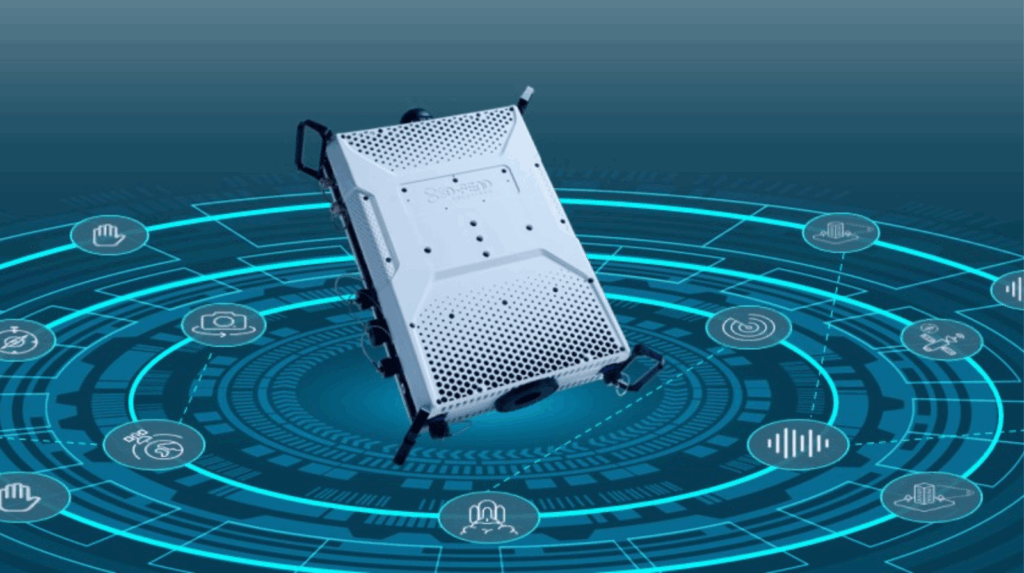

Modern threats demand flexible solutions. As unauthorized drone incidents become more frequent across urban centers, borders, airports, and critical infrastructure sites, governments and enterprises are evaluating not just which counter-UAV system to deploy today, but which system will still be relevant tomorrow.
The answer lies in two principles: interoperability and open architecture. These concepts may sound technical, but their impact is deeply practical: greater adaptability, long-term cost efficiency, and future-proof readiness for evolving missions.
Every operational environment has unique requirements. A stadium tasked with protecting tens of thousands of visitors has different needs than a military unit managing drone incursions in the field. Border security faces entirely different challenges than energy utilities safeguarding critical facilities.
Yet the one constant is that multiple technologies can better cover more scenarios than any one can on its own. Interoperability ensures that a counter UAV system can integrate with complementary technologies, from radar and other sensors to jammers and kinetic options when permitted, as well as command and control platforms. This holistic approach gives decision-makers the flexibility to respond with escalating measures, rather than relying on one tool in isolation.
Interoperability also supports joint missions. In many cases, local law enforcement, federal agencies, and private stakeholders must work together. A system designed for interoperability communicates seamlessly across these stakeholders’ existing technologies, improving coordination and reducing critical delays in decision-making.

Open architecture takes interoperability further. Instead of a closed, proprietary design, open architecture uses modular, standards-based components that can evolve over time. For organizations investing in counter-drone solutions, this means:
This design philosophy mirrors other mission-critical industries, from defense to telecommunications, where open standards have been the key to long-term sustainability.
Adopting systems built on interoperability and open architecture provides measurable long-term advantages:
Drone technology evolves rapidly. New frequencies, flight profiles, and tactics appear each year. An open, interoperable system allows security operators to respond to these shifts without rethinking their entire investment.
2. Budget Efficiency
Governments and enterprises face limited budgets and long procurement cycles. Replacing closed systems every few years is neither sustainable nor practical. Open architecture allows organizations to extend the life of their systems with targeted upgrades, protecting taxpayer dollars and corporate resources alike.
3. Cross-Agency Collaboration
Many missions require coordination across multiple stakeholders: police, border security, aviation authorities, or event organizers. An interoperable system integrates into existing command-and-control centers, ensuring that everyone operates from a unified picture.
4. Ecosystem Integration
The counter-drone mission rarely exists in isolation. Airports, for example, must integrate their counter-drone measures into various airport management systems. Energy utilities may need their counter-drone data integrated with security monitoring dashboards. Interoperability ensures that the counter-drone layer complements, rather than competes with, the broader security ecosystem.
5. Mission Continuity
As governments and enterprises build long-term strategies, mission continuity becomes essential. Open architecture reduces the risk of obsolescence. Even as suppliers innovate or markets shift, organizations maintain confidence that their systems can continue to evolve.
Capital cities, national borders, and major international events represent some of the most challenging environments to protect. Each mission carries unpredictable dynamics, shifting stakeholders, and rapidly changing threat profiles, demanding flexibility above all else.
Selecting a counter UAV system built on interoperability and open architecture gives agencies the adaptability to meet these uncertainties head-on. Whether the challenge involves emerging drone tactics, newly deployed technologies, or multi-agency coalitions, open and interoperable systems support a mission-ready posture. The decision is not just about meeting today’s requirements but about sustaining long-term resilience in the face of evolving demands.
The counter-drone industry has reached a turning point.. Interoperable, open systems offer a platform approach:
Advanced platforms like EnforceAir PLUS demonstrate the value of an open, multilayered approach, combining RF-cyber capabilities with complementary technologies in one interoperable framework. This approach is what many governments and enterprises seek when evaluating counter-drone technologies.
Counter-drone missions will only grow more complex. The threats are evolving, the environments are varied, and the need for cooperation across stakeholders is constant. Interoperability and open architecture provide the foundation for long-term adaptability, operational efficiency, and sustainable investment.
For decision makers, the message is clear: the most effective counter UAV system is the one that solves today’s problem and can also seamlessly evolve with tomorrow’s challenges.
Interoperability allows counter UAV systems to integrate with radar, C2 platforms, and other security layers. This creates a more flexible, coordinated defense that can adapt to diverse missions and multi-agency operations.
Open architecture ensures systems are modular, upgradeable, and scalable. This means governments and enterprises can extend system lifecycles, add new capabilities, and avoid being locked in.
By allowing seamless integration and upgrades, open systems protect against obsolescence. They enable agencies to adapt to evolving drone threats, technologies, and mission requirements without replacing the entire platform.
Complex and sensitive environments such as airports, local government, borders, and major events rely heavily on interoperable systems to manage varied and unpredictable threats while supporting cross-agency collaboration.